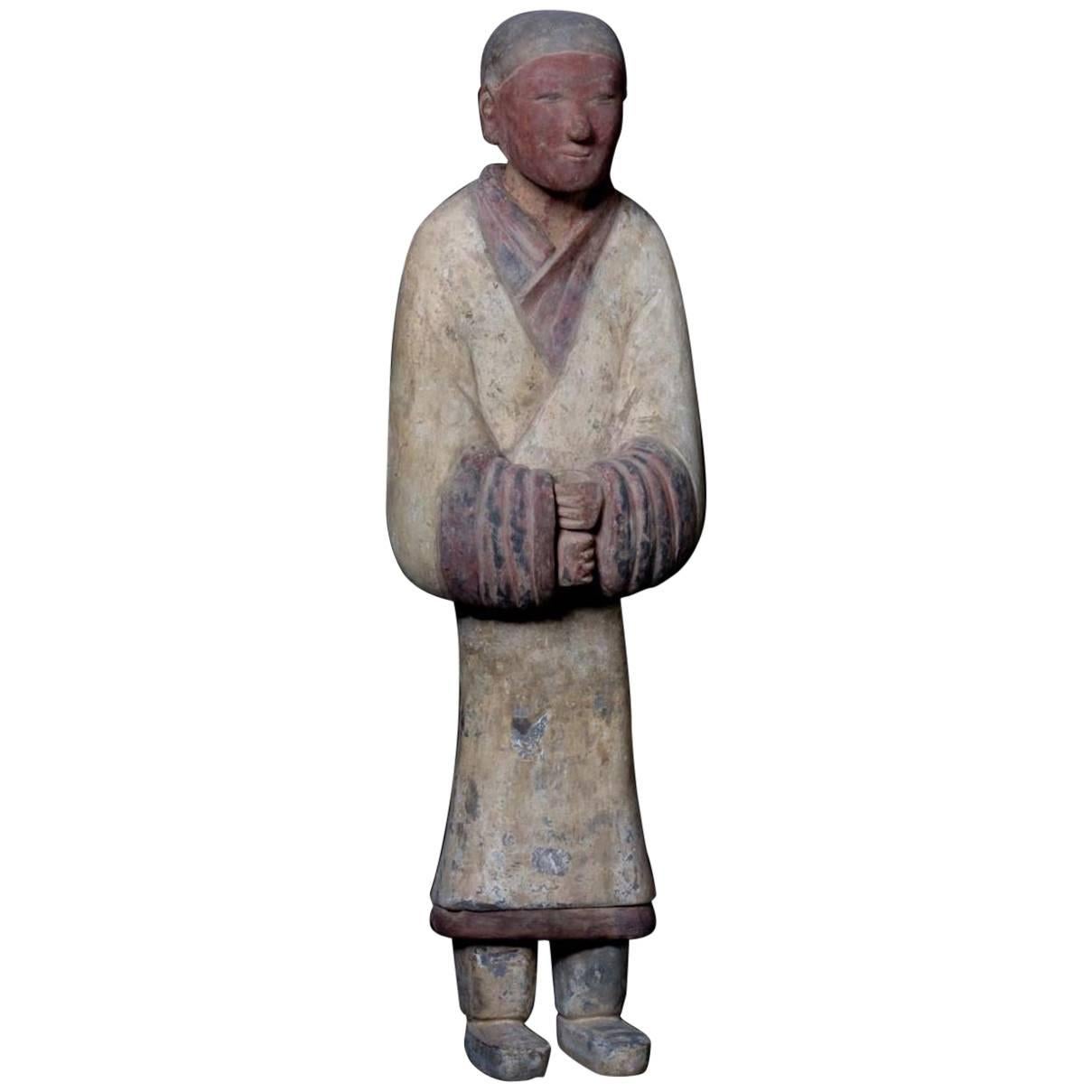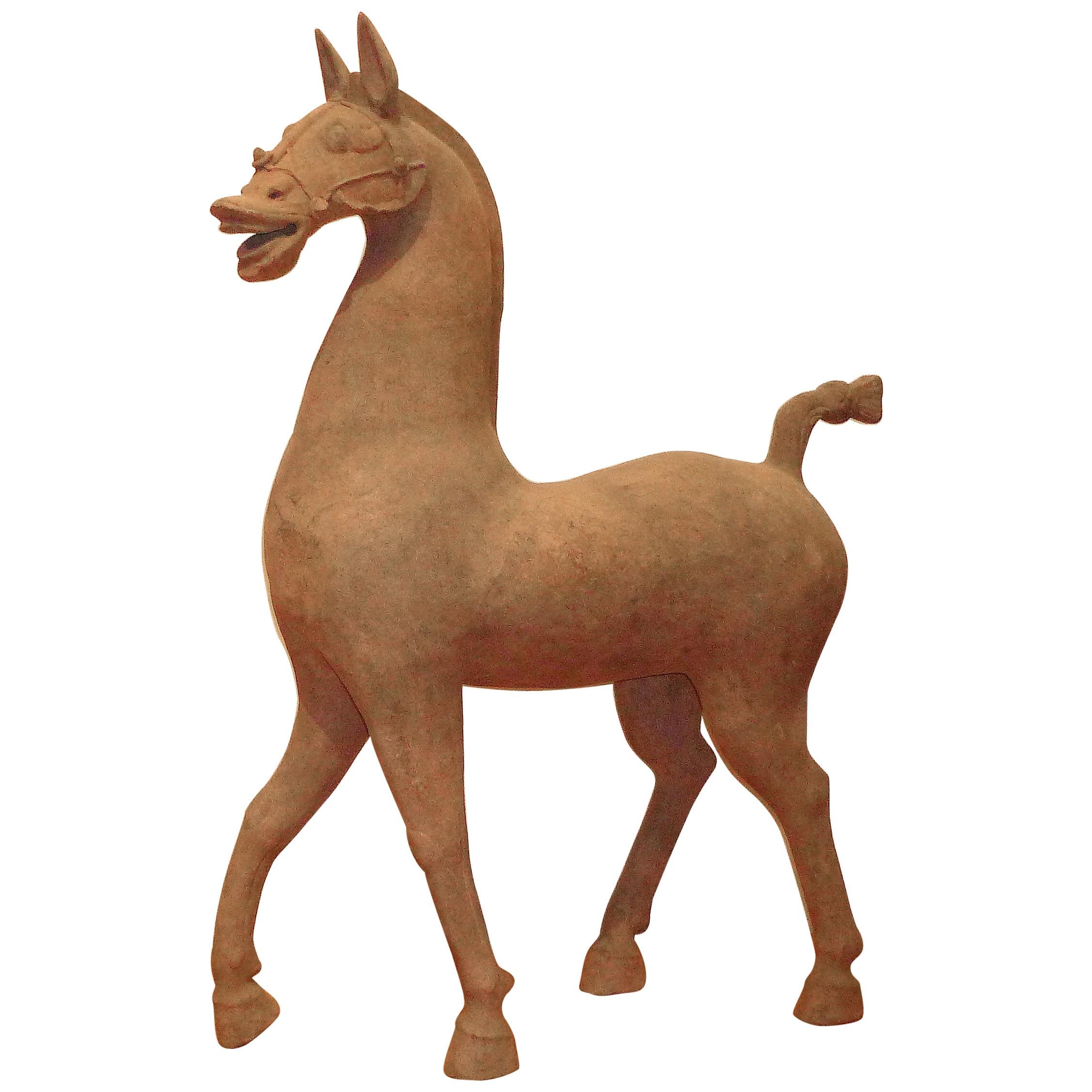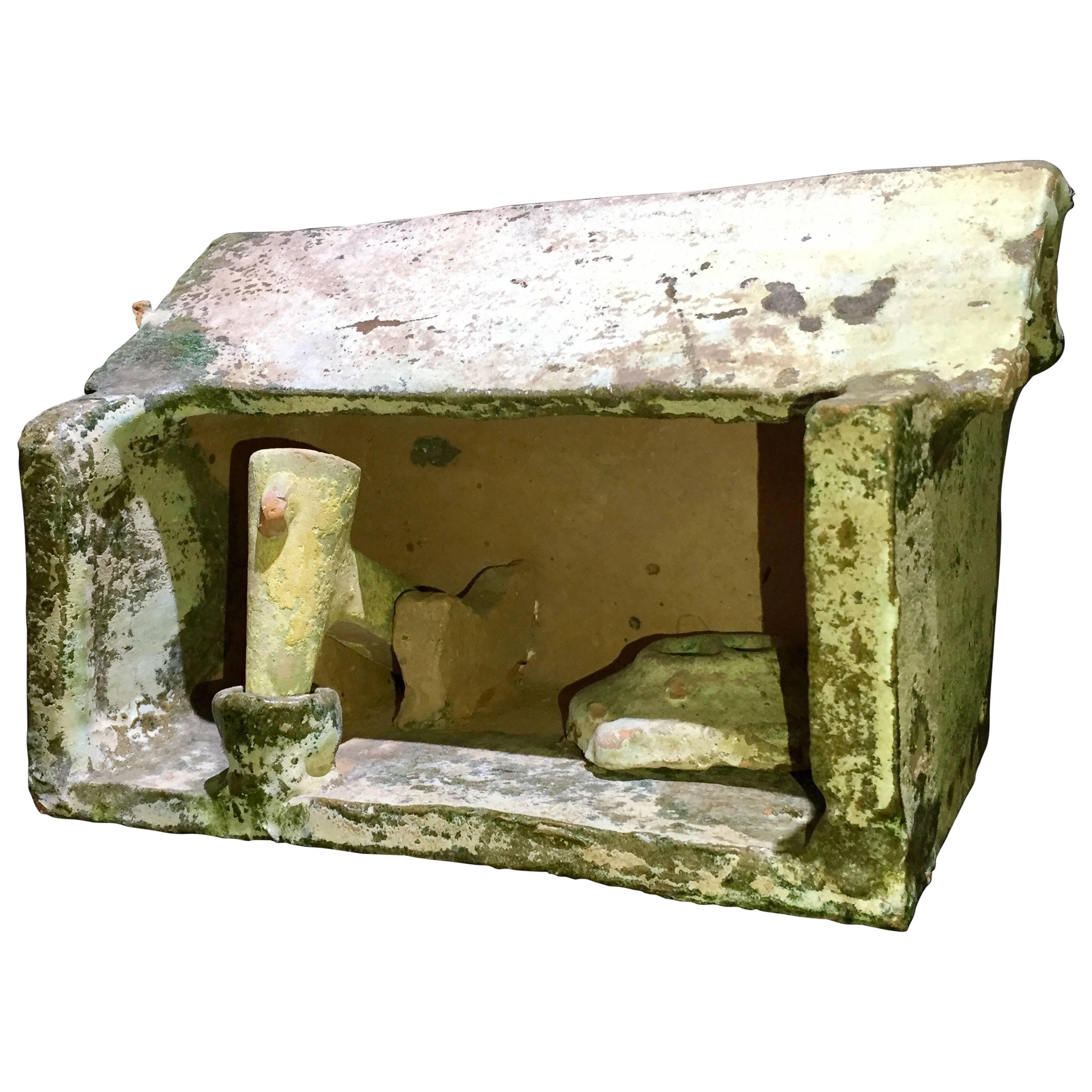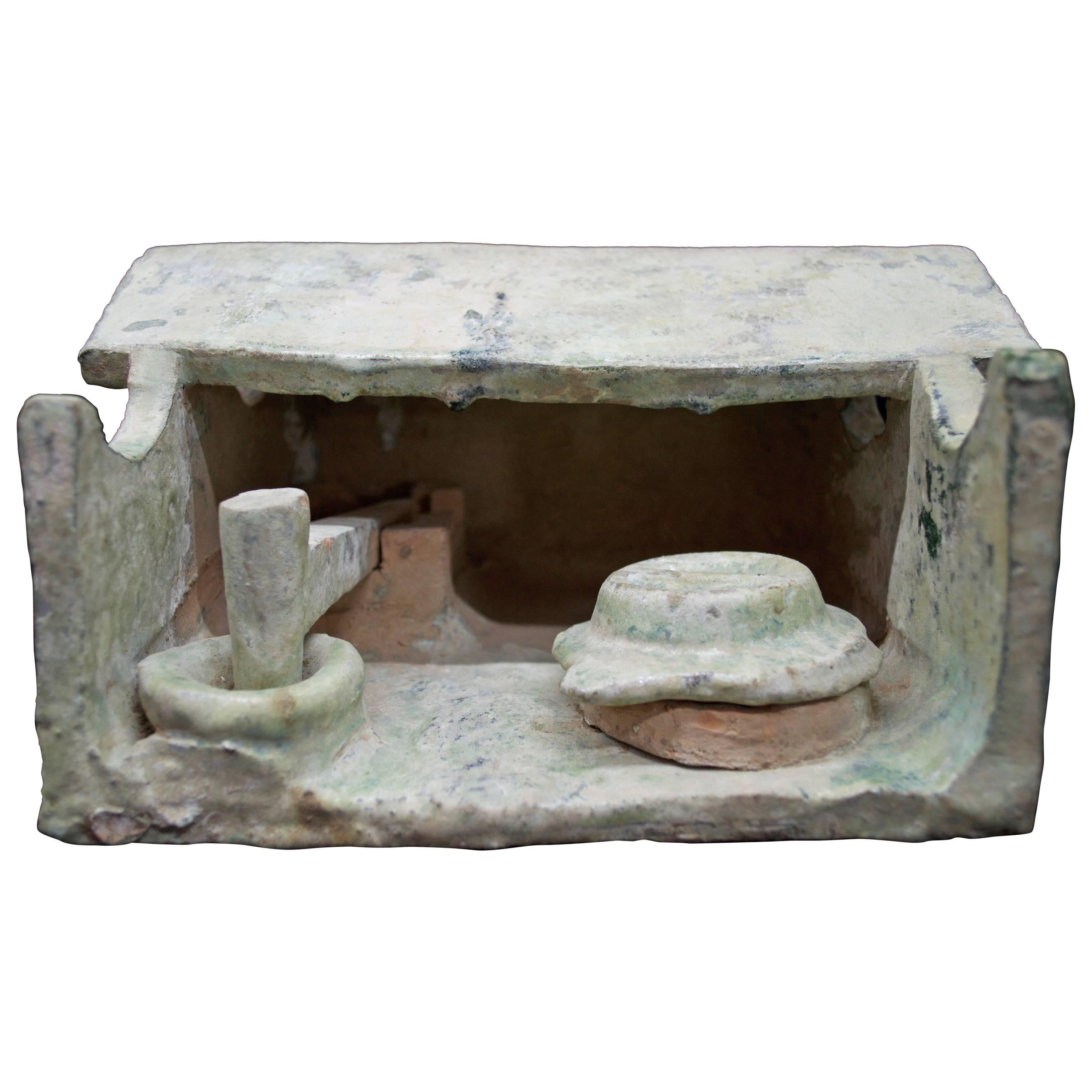Items Similar to Chinese Terracotta Sculpture Representing A Horseman, China Han Dynasty
Want more images or videos?
Request additional images or videos from the seller
1 of 15
Chinese Terracotta Sculpture Representing A Horseman, China Han Dynasty
About the Item
Mingqi in gray terracotta with white slip and polychrome, representing a rider on his horse.
Very good state of conservation.
Please note that all ancient Chinese terracotta sculptures were placed in the graves of the deceased to accompany them in their afterlife. They were subsequently extracted there and may therefore present wear, lack of polychromy or even restorations.
China, Han dynasty (206 BC - 220 AD)
- Dimensions:Height: 12.21 in (31 cm)Width: 11.23 in (28.5 cm)Depth: 4.93 in (12.5 cm)
- Style:Han (Of the Period)
- Materials and Techniques:Terracotta,Cold-Painted
- Place of Origin:
- Period:
- Date of Manufacture:206 BC - 220 AD
- Condition:Repaired: Possible restoration on one leg. Wear consistent with age and use.
- Seller Location:Saverne, FR
- Reference Number:1stDibs: LU8536239356042
About the Seller
5.0
Vetted Seller
These experienced sellers undergo a comprehensive evaluation by our team of in-house experts.
1stDibs seller since 2023
6 sales on 1stDibs
Typical response time: 3 hours
- ShippingRetrieving quote...Ships From: Saverne, France
- Return PolicyThis item cannot be returned.
More From This SellerView All
- Important chinese terracotta sculpture of a camel, China Tang dynastyLocated in Saverne, Grand EstMingqi in grey terracotta with white slip and polychromy, representing a Bactrian camel, ridden by a court lady. Good condition. Please note that all ancient Chinese terracotta sculp...Category
Antique 15th Century and Earlier Chinese Tang Sculptures and Carvings
MaterialsTerracotta
- Important chinese terracotta sculpture of a horse, China Northern Wei dynastyLocated in Saverne, Grand EstTerracotta mingqi with white slip and polychromy, representing a horse with its finery. Very good to perfect condition. Please note that all ancient Chinese terracotta sculptures wer...Category
Antique 15th Century and Earlier Chinese Other Sculptures and Carvings
MaterialsTerracotta
- Wooden Deity Statue, China Ming PeriodLocated in Saverne, Grand EstStatue of a Taoist god in wood, represented seated on a seat with armrests in the shape of heads of dragons. The face is really beautifully rendered, as well as the draping of the co...Category
Antique 17th Century Chinese Ming Sculptures and Carvings
MaterialsWood
- Okimono - Bronze Sculpture By Kakuha Kanzaemon, Japan Meiji EraLocated in Saverne, Grand EstSuperb bronze okimono with black patina representing a peasant resting after his work, a basket of vegetables at his feet. Signed Kakuha Sei on the wooden stump. Excellent quality ! ...Category
Antique Late 19th Century Japanese Meiji Sculptures and Carvings
MaterialsBronze
- Chinese Porcelain Vase, China Qing DynastyLocated in Saverne, Grand EstPorcelain vase with polychrome decoration with gilt highlights of figures in a garden. Marked under the base. 19th century China.Category
Antique Late 19th Century Chinese Ceramics
MaterialsPorcelain
- Kangxi Period Chinese Dish, China Qing DynastyLocated in Saverne, Grand EstPorcelain dish decorated in blue and iron red with gilt highlights of flowers and landscapes. A chip barely visible otherwise superb state of preservation. Diameter 39cm. Marked with...Category
Antique 18th Century Chinese Ceramics
MaterialsPorcelain
You May Also Like
- Elegant Han Dynasty Terracotta Warrior - China '206 BC - 220 AD'Located in San Pedro Garza Garcia, Nuevo LeonImpressive terracotta warrior representing a banner bearer gripping a wooden staff with his hands (dematerialized through the ages); his gaze is ser...Category
Antique 15th Century and Earlier Chinese Han Antiquities
MaterialsTerracotta
- Massive Chinese Han Dynasty Sichuan Terracotta Pottery Horse, Oxford TL TestedLocated in Greenwich, CTA massive Chinese Han dynasty Sichuan terracotta pottery figure of a horse Han dynasty (206 BC-220 AD) Powerfully modelled in a pose of alert attention, its strong neck and head po...Category
Antique 15th Century and Earlier Chinese Han Sculptures and Carvings
MaterialsTerracotta
- Monumental Han Dynasty Terracotta Horse - TL Tested - China, '206 BC–220 AD'Located in San Pedro Garza Garcia, Nuevo LeonA massive pottery horse with separately made head and tail, standing on all fours and striding with its right hoof forward. Extended snout ends in parted lips showing teeth beneath i...Category
Antique 15th Century and Earlier Chinese Han Antiquities
MaterialsTerracotta
- Chinese Terracotta Statue Tomb Figure East Han DynastyLocated in Atlanta, GAA Chinese terracotta tomb figure (Ni Yong) from East Han Dynasty (25-220 AD), likely from the area of nowadays Sichuan. It depicts a horse groomer with tool and harness in hand. Dres...Category
Antique 15th Century and Earlier Chinese Archaistic Sculptures and Carvings
MaterialsClay
- Eastern Han Dynasty Terracotta Model of a Paper Mill , China '206BC - 220AD'Located in San Pedro Garza Garcia, Nuevo LeonSlab pottery constructed Model of a Paper Mill, in Green and Cream Color Glazed Terracotta having a peaked roof – open walled form with a mechanical pounder and a large round storage container. Light blue-green mottled glazed surface with some iridescence patina to the glaze. The Iridescence is a refraction of the layers on the glass that produces multicolor hues & metallic luster, and only develops after one thousand years of being buried in the ground. An unquestionable mark of antiquity, impossible to falsify. Han Dynasty, dated 206 B.C-220 A.D. Condition: Excellent, wear commensurate with age, an unusual example. This fantastic piece is accompanied by a Certificate of Authenticity. Sculptural effigies of domesticated animals were often interred in the tombs of nobility and elite members of the social hierarchy. Models like this one were made to represent everything from simple goat or pig pens to the most elaborate towers and palaces. Because very few ancient Chinese buildings have survived intact, these models, along with descriptions from ancient texts, give a good representation of what the buildings might have looked like. Burial figurines of graceful dancers, mystical beasts, and everyday objects reveal both how people in early China approached death and how they lived. Since people viewed the afterlife as an extension of worldly life, these figurines, called mingqi, sometimes referred as “spirit utensils” or “vessels of ghosts” disclose details of routine existence and provide insights into belief systems over a thousand-year period. For the first time in Chinese history, we have images of rural and daily life during the Han in the form of contemporary records...Category
Antique 15th Century and Earlier Chinese Han Antiquities
MaterialsTerracotta
- Eastern Han Dynasty Terracotta Barn Workshop, China '206BC - 220AD' Ex-MuseumLocated in San Pedro Garza Garcia, Nuevo LeonSlab pottery constructed barn workshop having a peaked roof – open walled form with a mechanical pounder and a large round covered storage container. Light blue-green mottled glazed surface with some iridescence patina to the glaze. Condition: Intact, excellent condition, an unusual example. Provenance: The Living Torah Museum, Brooklyn; ex. Sands of Time, 2002. Sculptural effigies of domesticated animals were often interred in the tombs of nobility and elite members of the social hierarchy. Models like this one were made to represent everything from simple goat or pig pens to the most elaborate towers and palaces. Because very few ancient Chinese buildings have survived intact, these models, along with descriptions from ancient texts, give a good representation of what the buildings might have looked like. This fantastic piece is accompanied by a Certificate of Authenticity. Burial figurines of graceful dancers, mystical beasts, and everyday objects reveal both how people in early China approached death and how they lived. Since people viewed the afterlife as an extension of worldly life, these figurines, called mingqi, sometimes referred as “spirit utensils” or “vessels of ghosts” disclose details of routine existence and provide insights into belief systems over a thousand-year period. For the first time in Chinese history, we have images of rural and daily life during the Han in the form of contemporary...Category
Antique 15th Century and Earlier Chinese Han Antiquities
MaterialsTerracotta
Recently Viewed
View AllMore Ways To Browse
Antique Wooden Mandalay Buddha From Burma
Painted Face Japanese Doll
Thailand Monk
Jizo Figure
Avalokiteshvara Bodhisattva
Buddha Teaching Pose
Tres Chic
Cream Vintage Distressed Rug
Small Striped Kilim
Matching Corner Cabinets
Coppia Poltrone
Mid Century Modern Bedside Drawers Pair
Mexico Midcentury Couch
Neoclassical Marble Lamps Pair
Faux Bamboo And Brass Coffee Table
60 Commode Drawers
Bitossi Aldo Londi Rimini Blue Ceramic
Set Luncheon Plates





